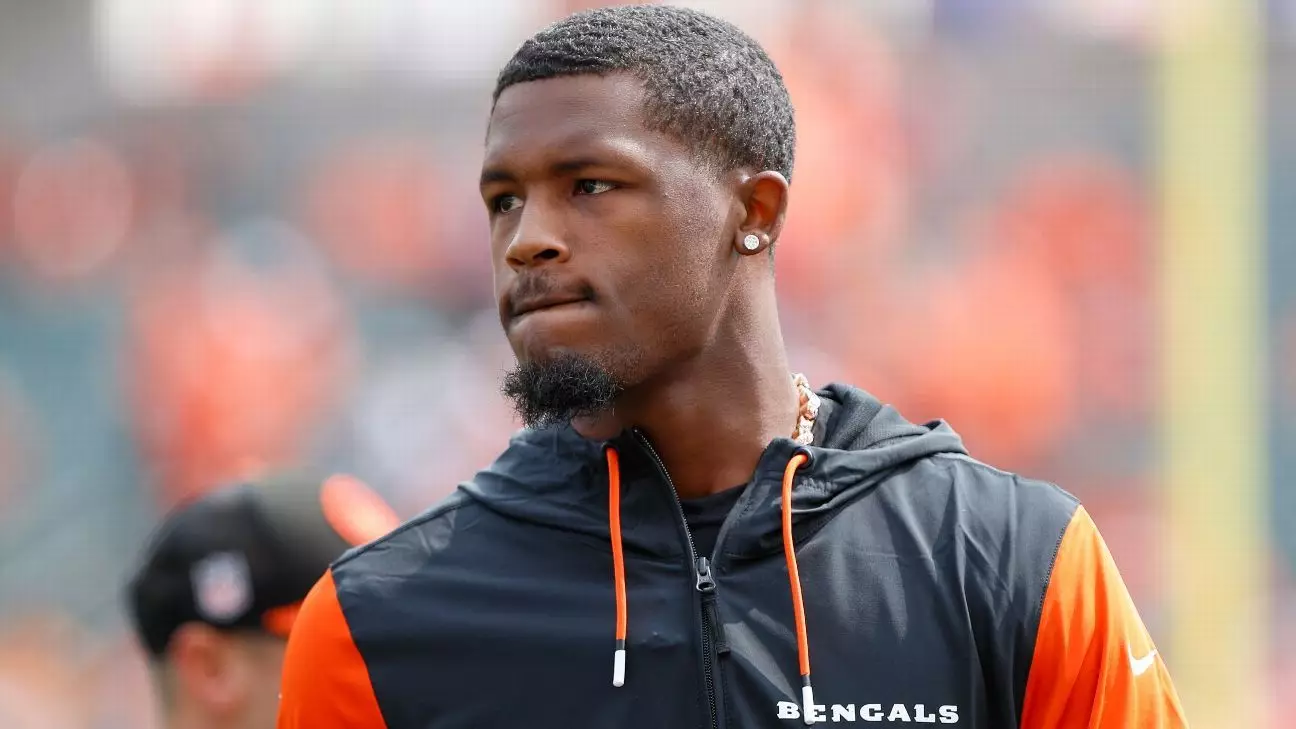Cincinnati Bengals wide receiver Tee Higgins finds himself at the center of a perplexing narrative regarding his recent hamstring injury. As a player with a strong work ethic and high ambitions, it’s understandable that Higgins would be frustrated with the perception that he is feigning an injury. Speaking with ESPN, he reaffirmed that his recent absence from practice is not related to his contractual status but is solely due to a legitimate physical setback. This situation highlights how easily misinformation can become entrenched within fan communities, often clouding the appreciation of athletes’ motivations and struggles.
Injuries are a complex facet of sports, and their impact on an athlete’s career and contracts cannot be overstated. Higgins’ comments indicate a direct desire to contribute to his team, further emphasizing that injuries can be unpredictable and often misinterpreted. He mentioned, “I just don’t understand why fans think I’m faking an injury,” which underlines the disconnect between public perception and the realities athletes face off the field.
The backdrop of Higgins’ injury narrative is woven tightly with the topic of contract negotiations. Having signed his franchise tag earlier in the season, the dynamics of the situation have changed for Higgins. The deadline for reaching a long-term deal was on July 15, after which negotiations were prohibited until the end of the regular season. This added a layer of complexity as Higgins navigates the implications of being tagged while also recovering from an injury. His previous requests for an extension underscore a growing desire for security and recognition, a sentiment echoed by many athletes in similar situations.
The franchise tag often places players in a precarious position, as athletes must balance immediate performance with long-term career stability. Higgins had previously expressed optimism about the upcoming season, sharing that he signed the tag to focus on having his best year yet. However, the unanticipated nature of his hamstring injury has introduced unforeseen challenges that could once again complicate his contractual aspirations.
Teammates’ Support
Despite the swirling narratives and uncertainties, Higgin’s determination remains evident. His teammates’ support has fortified his resolve, with Bengals left guard Cordell Volson commending Higgins for his dedication and work ethic. It’s clear that within the locker room, the focus is not solely on contracts or injuries but on collective performance and camaraderie. The acknowledgment from teammates can be invaluable, providing reassurance in the face of public scrutiny.
Athletes like Higgins often thrive on the support and trust of their peers, especially when external factors—like fan opinions and contract negotiations—pile on pressure. His desire to return at full strength exemplifies the underlying commitment he holds not just to his career, but to his teammates and the Bengals’ overall success.
As Higgins continues his recovery, the franchise may find themselves in a pivotal position concerning both their offensive strategy and Higgins’ future. He is, without a doubt, one of the franchise’s key offensive assets, having accumulated over 3,000 receiving yards in the last three years. However, persistent injuries could dampen his potential impact and influence negotiations when the season concludes.
Higgins articulately expressed his wish to return to the field at full capacity, stating, “I want to go out there and give my teammates a 100% of Tee Higgins.” This demand embodies the spirit of competition that drives athletes while also highlighting the profound responsibility they feel towards their teams. His upcoming performance will be critical, not only for his personal aspirations but also in solidifying his place in the Bengals’ roster and future contracts.
Ultimately, the interplay between Higgins’ physical health, his contract status, and how both are perceived externally represents a microcosm of the challenges faced by professional athletes today. As they navigate these complexities, the importance of understanding their perspectives becomes increasingly vital for fans seeking a deeper connection to the sport.


Leave a Reply